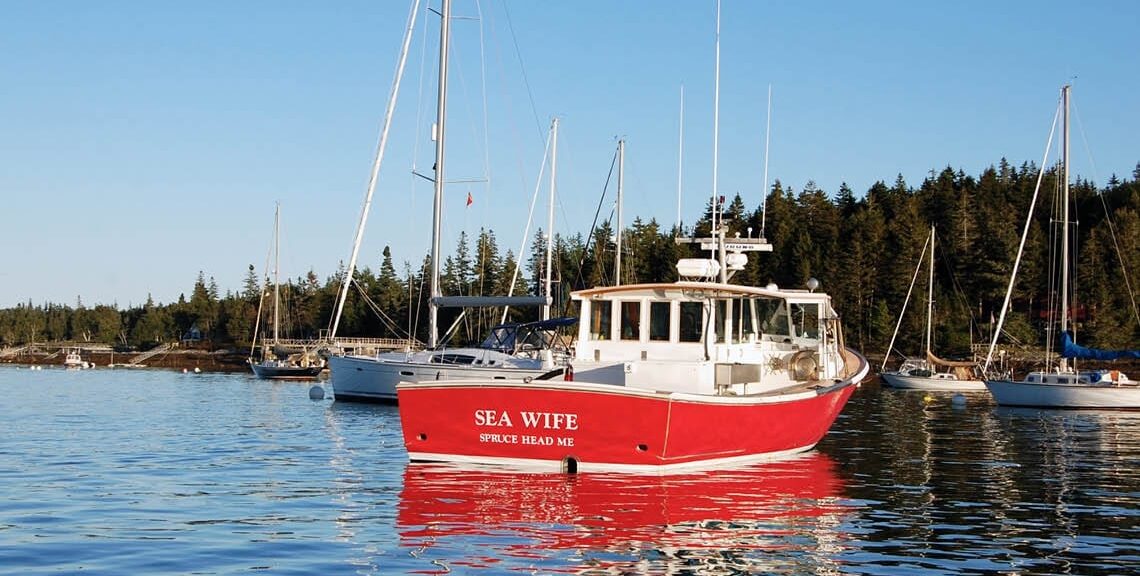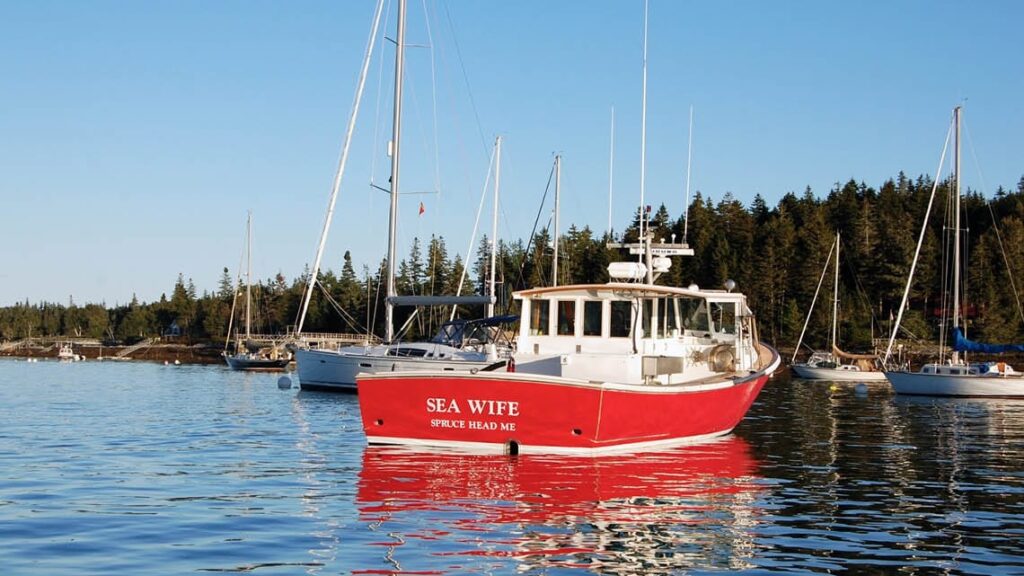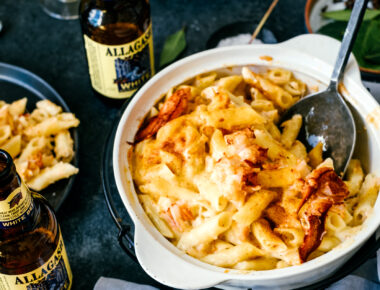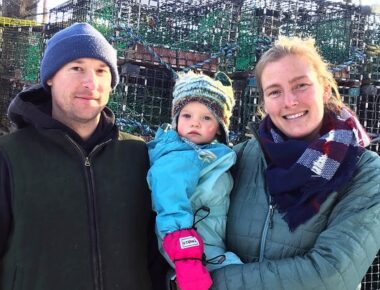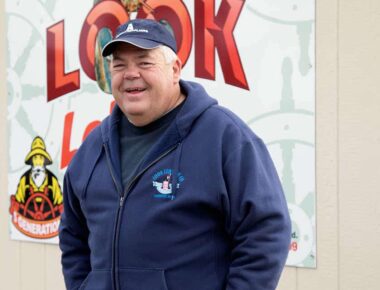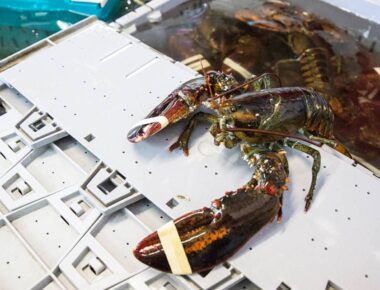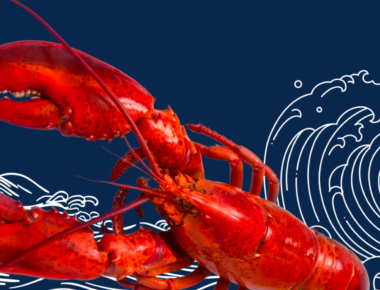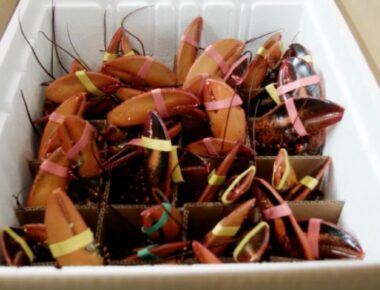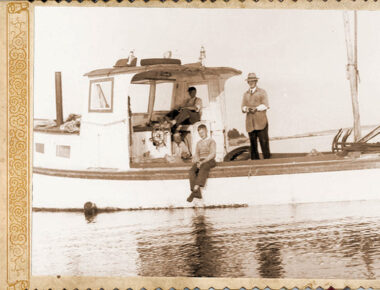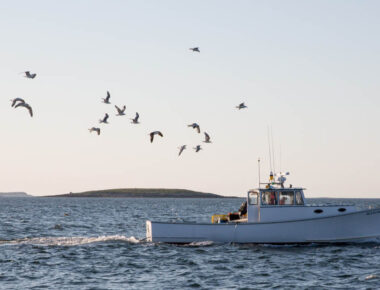Several years ago, on a brisk May morning, I hopped into a small wooden skiff in Spruce Head and brought it around to Tenants Harbor. I had bought the skiff for my kids, but as I brought it around that morning, I came to love the skiff myself – it handled nicely through the small bit of chop, and its lines I had admired from the get go. I secured the skiff and headed up the ramp where I met our wharf manager. “You get that skiff in Spruce Head?” I nodded. “That’s a Kass skiff,” he said, admiration in his voice. I had heard of Peter Kass before, I knew he had built Sea Wife, a stunning 42’ fishing boat owned by John Tripp. Kass built only wooden boats, one at a time, in a small shop in South Bristol. For many fishermen, the allure of the wooden boat was comfort: wooden boats are more forgiving; everything is softer on a wooden boat. If you spend long days on the water hauling gear, that comfort pays dividends.
I had the chance to visit Peter Kass at his shop late one autumn afternoon. It took me several tries to find the shop. For all he is revered, Kass’ boatshop is tucked away with little signage to direct a visitor to it – at the end of a non-descript road (Poorhouse Cove Road) with a small sign that says, simply, “boatshop”.
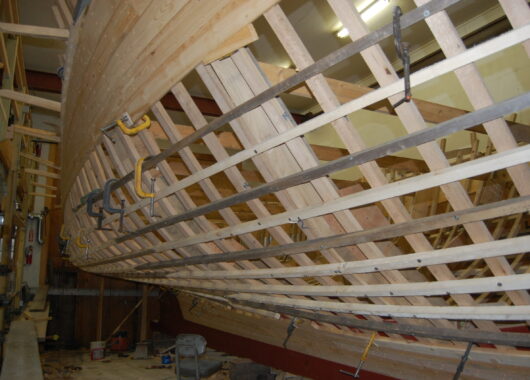
The first thing I noticed when I walked in was the smell – wood. No acrid smell of resin or glass, the pervasive scent of most boatbuilding shops. The day I visited they were steaming cedar planks and laying them up on the oak frames for a 44’ fishing boat that was headed to Cundy’s Harbor. One at a time the planks came out of the steambox (literally a long rectangular box that can fit the planks) and were carried across one bay to another where the boat lay. It was Kass, plus three or four guys, most of whom had been with him a good while. The word that came readily to mind as I watched the process was: craftsmanship.
“We typically build 1-2 boats per year,” Kass told me. “A lot of the guys come in and build with us; that’s part of the fun.” Here was a man who clearly enjoyed his trade. Kass had worked for a number of years at a small wooden boatbuilding shop in Round Pond, Maine. The small size appealed to him and he ventured out on his own. That was in 1983. He started doing repairs, storage and building small skiffs (18’ West Pointers). His first commissioned inboard boat was a pleasure craft in 1984; and in 1986 he built his first commercial fishing boat, a 42’ boat named the Sharon Roseanne, for a guy out of Portsmouth. The boat still fishes and is owned by the son of the fellow who had it commissioned. I thought about Sea Wife, that boat had been passed down from father to son as well: Jimmy Tripp had her commissioned in 1995, fished her hard by all accounts, and passed her along to his son John who brought her in to be recommissioned. Jimmy then had a new boat built by Kass, Outer Fall, which was a 47-footer. By Kass’ account both father and son had spent a good deal of time helping with the building and recommissioning. “John was quite handy,” Kass recalled.
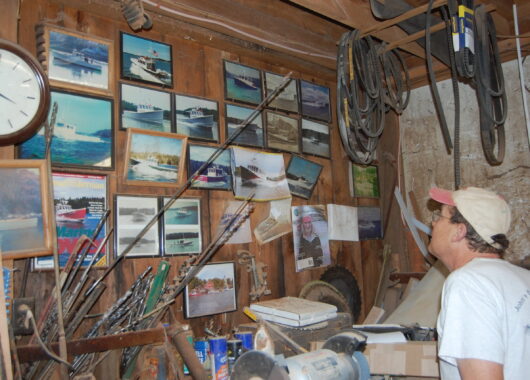
When I brought my skiff along to our wharf several years ago, John was one of the first to notice. “If you ever want to sell that skiff, you let me know.” Each spring he asked if I wanted to sell my Kass skiff. I had thought about it, my kids were out growing the skiff, I had plenty to manage by way of small boats (a veritable fleet), maybe I should let her go. Listening to Kass relate the story of John and Jimmy, the time they’d both spent in his shop building and refitting their own boats, John’s standing offer on my Kass skiff took on a different context.
The biggest change Kass has seen over his decades of boatbuilding was the same trend everyone saw – bigger boats, designed to go further offshore. Most of his boats stay right here in Maine, but there was one that was built for an Australian guy, one in Michigan, one in California, and one that “went to San Francisco and then came back to Stonington (Maine),” Kass reflected with a wry smile.
As I drove out that evening, it struck me that everything about Kass’ shop was what people sought when they came to Maine. There was craftsmanship and fine boatbuilding, one boat at a time, but more than that, there were relationships that stretched across generations and stories. Each boat had a story, born of people and place, forged over years.
During my visit I had mentioned my skiff to Kass. “Oh yeah, I remember that skiff. I had a guy who worked for me, he had been a house painter and he came here for a number of years. He wanted a skiff for recreation and we built that one with him. He was a heck of a guy, he passed away years ago but he left me with a lot of great memories.” Driving home that evening, I knew what I’d tell John next spring when he asked about buying my skiff. Now I knew its story, and I was adding to it: my son had hand hauled from it for several years and my daughters were now in it. I still had a few more chapters to add before passing it along.

